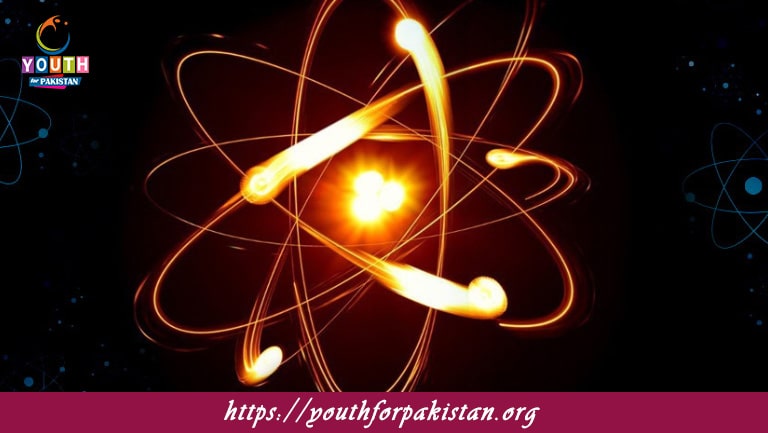Nuclear Physics MDCAT MCQs with Answers

Welcome to the Nuclear Physics MDCAT MCQs with Answers. In this post, we have shared Nuclear Physics Multiple Choice Questions and Answers for PMC MDCAT 2024. Each question in MDCAT Physics offers a chance to enhance your knowledge regarding Nuclear Physics MCQs in this MDCAT Online Test.
Nuclear Physics MDCAT MCQs Test Preparations
What is the charge of an alpha particle?
A) -2
B) 0
C) +1
D) +2
Which particle has the highest penetration power?
A) Alpha particle
B) Beta particle
C) Gamma ray
D) Neutron
What is the atomic number of an element defined by?
A) Number of protons
B) Number of neutrons
C) Number of electrons
D) Number of nucleons
Which of the following particles is not affected by electric or magnetic fields?
A) Alpha particles
B) Beta particles
C) Gamma rays
D) Neutrons
The process in which a heavy nucleus splits into two lighter nuclei is called:
A) Fusion
B) Fission
C) Radioactive decay
D) Pair production
Which particle is emitted during beta decay?
A) Proton
B) Neutron
C) Electron
D) Positron
What is the primary fuel used in nuclear reactors?
A) Uranium-235
B) Thorium-232
C) Plutonium-239
D) Hydrogen-1
The half-life of a radioactive substance is defined as:
A) The time taken for half of the substance to decay
B) The time taken for the substance to become stable
C) The time taken for all the substance to decay
D) The time taken for the substance to emit radiation
What is the name of the force that holds protons and neutrons together in the nucleus?
A) Gravitational force
B) Electromagnetic force
C) Weak nuclear force
D) Strong nuclear force
In nuclear fusion, two light nuclei combine to form:
A) A heavier nucleus and energy
B) A lighter nucleus and energy
C) Two heavier nuclei
D) No change in nucleus but release of energy
What is a nucleon?
A) A proton or neutron in the nucleus
B) An electron in the outer shell
C) A neutron in the nucleus
D) A proton in the nucleus
What type of radiation is released during gamma decay?
A) Charged particles
B) Neutrons
C) Electromagnetic radiation
D) Beta particles
Which isotope is commonly used in PET scans?
A) Carbon-14
B) Iodine-131
C) Fluorine-18
D) Technetium-99m
The atomic mass of an atom is approximately equal to:
A) The number of protons
B) The number of neutrons
C) The number of electrons
D) The number of protons and neutrons
What is the purpose of control rods in a nuclear reactor?
A) To initiate the nuclear reaction
B) To absorb excess neutrons and control the reaction rate
C) To supply fuel to the reactor
D) To shield the reactor from radiation
In nuclear physics, the term “binding energy” refers to:
A) The energy needed to break a nucleus into its constituent protons and neutrons
B) The energy released during a chemical reaction
C) The energy absorbed by an atom during excitation
D) The energy of an electron in an atom
What is the most common unit used to measure radiation dose?
A) Gray (Gy)
B) Sievert (Sv)
C) Becquerel (Bq)
D) Curie (Ci)
In a nuclear reaction, which of the following quantities is conserved?
A) Mass
B) Charge
C) Number of nucleons
D) All of the above
Which of the following elements is not typically used as a nuclear fuel?
A) Uranium
B) Thorium
C) Plutonium
D) Carbon
What is the result of the fusion of two deuterium nuclei?
A) Helium-3 and a neutron
B) Helium-4 and a proton
C) Hydrogen-1 and a neutron
D) Lithium-6 and a proton
Which of the following processes does not involve a change in the number of protons in the nucleus?
A) Alpha decay
B) Beta decay
C) Gamma decay
D) Electron capture
The nucleus of an atom consists of:
A) Electrons and protons
B) Protons and neutrons
C) Electrons and neutrons
D) Neutrons only
What is the name of the particle emitted in positron emission?
A) Electron
B) Neutrino
C) Positron
D) Photon
What is the term for the minimum energy required to remove a proton from a nucleus?
A) Ionization energy
B) Nuclear binding energy
C) Work function
D) Binding energy
Which of the following particles has no charge and no mass?
A) Proton
B) Neutron
C) Neutrino
D) Electron
What type of radiation is associated with the conversion of a neutron into a proton?
A) Alpha radiation
B) Beta radiation
C) Gamma radiation
D) Neutron radiation
In nuclear fission, which of the following particles typically initiates the reaction?
A) Proton
B) Neutron
C) Electron
D) Positron
The phenomenon where a heavy nucleus spontaneously splits into two lighter nuclei is called:
A) Fusion
B) Decay
C) Fission
D) Capture
Which device is commonly used to detect ionizing radiation?
A) Thermocouple
B) Galvanometer
C) Geiger-Müller counter
D) Voltmeter
What is the primary difference between nuclear fission and nuclear fusion?
A) Fission splits nuclei, fusion combines them
B) Fission releases energy, fusion absorbs it
C) Fusion splits nuclei, fission combines them
D) Fusion is safer than fission
Which isotope of hydrogen is also known as deuterium?
A) Hydrogen-1
B) Hydrogen-2
C) Hydrogen-3
D) Hydrogen-4
What is the main reason nuclear reactors use moderators?
A) To absorb radiation
B) To slow down neutrons
C) To increase the energy of neutrons
D) To cool the reactor
Which of the following is not a common product of nuclear fission?
A) Energy
B) Neutrons
C) Protons
D) Radioactive isotopes
The concept of mass-energy equivalence is described by which equation?
A) E = mc^2
B) F = ma
C) E = hf
D) P = IV
In a nuclear power plant, the heat generated by nuclear fission is used to:
A) Directly generate electricity
B) Heat water to produce steam
C) Melt metals
D) None of the above
The term “nuclear chain reaction” refers to:
A) A series of nuclear reactions that are self-sustaining
B) The breaking of chemical bonds
C) The continuous fusion of light nuclei
D) The interaction of atoms with radiation
Which of the following is not a type of radiation emitted during radioactive decay?
A) Alpha
B) Beta
C) Gamma
D) Delta
The strong nuclear force acts between:
A) Electrons and protons
B) Protons and neutrons
C) Neutrons and electrons
D) All charged particles
What is the process of transmutation in nuclear reactions?
A) The conversion of one element into another
B) The splitting of a nucleus into smaller nuclei
C) The combination of two nuclei to form a heavier nucleus
D) The emission of gamma rays from a nucleus
Which isotope is commonly used in nuclear reactors as a control rod material?
A) Uranium-238
B) Plutonium-239
C) Boron-10
D) Carbon-14
If you are interested to enhance your knowledge regarding Physics, Chemistry, Computer, and Biology please click on the link of each category, you will be redirected to dedicated website for each category.




